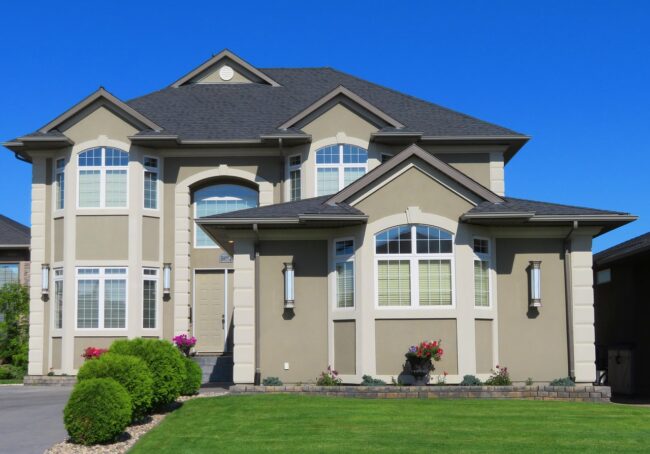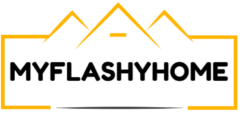
The Canadian housing market in 2025 is shaped by economic uncertainty stemming from tariffs and updates to immigration policies. These pressures influence renovation patterns. Many households are now choosing smaller projects instead of major overhauls. Data from a late 2024 poll by CIBC shows nearly half of Canadian homeowners recently completed or were planning improvements, with an average spend of about $19,000 per project. Of these, nearly half focused on minor updates and standard repairs. Cosmetic upgrades remain popular, as 41 percent of renovators cited visual appeal as their main motivation. Another 39 percent sought better functionality, and 27 percent aimed to improve home value.
Simple Fixes That Add Value
Homeowners are giving priority to easier projects such as repainting or fixing up well-worn elements. The appeal of these actions lies in their lower cost and lower risk, allowing for quick completion on a modest budget. Many also prefer these projects because economic uncertainty has made large renovations less attractive.
Sustainable features are seeing more demand too. Improvements that make a home more efficient with energy have become more common, as these can help lower household expenses and appeal to buyers. These include insulation and new heating or ventilation systems. In addition to improvements indoors, exterior enhancements such as painting, landscaping, or updating siding and windows are also common.
Value Returns by Room Type
Kitchen updates are widely regarded as the top project for adding home value. Common kitchen renovations include replacing appliances, renewing surfaces with new countertops, and installing improved cabinets. Homebuyers often look for modern, clean kitchens when browsing available homes. Research shows these improvements can sometimes recoup their entire cost at the time of resale.
Bathroom upgrades are nearly as important. Upgrades here often include new fixtures, new tile, and updated vanities or sinks. Like kitchen projects, bathroom updates can bring a nearly full return on the money invested, especially when planned well and completed with durable materials.
Tools for Comparing Market Value Across Renovated Homes
Homeowners and buyers often use several resources to compare the value of renovated homes before making real estate decisions. Many turn to property records and municipal assessments for background information. Others check market reports from well-known real estate companies.
Online platforms have also made it easier to assess recent sale prices, renovation histories, and current market estimates. For example, the real estate platform Wahi allows you to evaluate property value and lists property features, sales data, and price estimates. This access helps both sellers and buyers understand the effect of renovations on resale prices.
Outdoor Appearance and Curb Appeal
The outside look of a property has a substantial impact on its value at resale. Basic updates such as a fresh coat of paint, new siding, and landscaping can catch the attention of potential buyers. Even small steps like replacing the front door can recover almost the entire cost, and are less costly than extensive indoor work. In regions with warm summer months like Quebec and Prince Edward Island, additions such as decks or patios can add value by expanding usable living space outdoors.
Regional Patterns and Risks
Renovation results can look different depending on the region. In places like Newfoundland and Labrador, Quebec, and Prince Edward Island, home sales volume is expected to climb in 2025. In these locations, sellers may benefit more from pre-sale upgrades. In contrast, Ontario and British Columbia are projected to see fewer home sales, making costly renovations riskier. There, home improvements might aim more at maintaining value or responding to local buyer preferences.
Other parts of Canada, such as New Brunswick and Alberta, are likely to see home price increases. Renovation spending in these provinces could achieve higher returns if property values keep rising. Still, even in slower markets, buyers consistently show more interest in homes that have been well-maintained and updated.
Energy Efficiency and Sustainability
Homebuyers are showing more interest in homes with green features. Projects like installing energy-efficient windows, extra insulation, and updated heating or air systems can lower running costs and are often viewed positively by buyers. Energy-saving upgrades are not only attractive for utility savings but may also boost resale value, especially as more people place value on these measures.
Balancing Function, Cost, and Return
Renovation decisions are best when balanced between what makes daily living easier and what offers a solid return. Real estate professionals suggest that comfort and ease of use in the home should be the main guide, but cost recovery through increased resale value is still important. Renovations such as modernizing the kitchen or bathroom score highly on both comfort and cost recovery.
Small projects such as repainting or maintaining critical systems, like plumbing or electricity, enjoy widespread use because they are easy to finish and budget-friendly. These allow sellers to attract more buyer interest without overcommitting financially.
Considering Market Changes
The Canadian housing market as of the first part of 2025 is considered balanced. Nationally, the sales-to-new-listings ratio sits at about 47 percent, showing some areas have scarce inventory while others have plenty of homes available. This situation calls for careful planning. Homeowners benefit from checking regional sales and pricing trends before starting costly renovation projects. In some areas, competition between buyers boosts final selling prices. In others, supply outweighs demand, making it harder to recover renovation costs.
Professional advice, especially from local realtors, can help tailor renovation choices to the specific patterns of each region. These experts can outline what kinds of upgrades have performed best in a particular market.
Final Points
In summary, for Canadian homeowners preparing to sell, top value-adding renovations include small cosmetic updates, energy-saving features, modern kitchen and bathroom improvements, and modest outdoor enhancements. Project selection depends on local market conditions, resale trends, and each homeowner’s budget. By focusing on these factors, sellers stand the best chance to add value to their property without overreaching on risk or expense.
